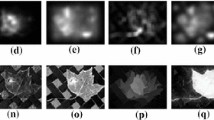Abstract
The focus-of-attention techniques implemented in SNA2, a knowledge-based system for seismogram interpretation, are presented. They consist of data compression of the input digital records, scanning of the compressed traces to detect candidate seismograms and extraction of seismogram features. A criterion is given to rate the clarity of seismograms; the clarity defines the order in which the system will consider them to build up the interpretation. The proposed techniques are simple and fast; they allow quick rejection of noise and focussing the attention of the system on the portions of traces containing relevant information.
Similar content being viewed by others
References
Barr, A., andFeigenbaum, E. A.,The Handbook of Artificial Intelligence (Pitman, London 1982).
Brownston, L., Farrell, R., Kant, E., andMartin, N.,Programming Expert Systems in OPSS (Addison-Wesley, New York 1985).
Chiaruttini, C., andRoberto, V. (1988),Automation of Seismic Network Signal Interpretation: An Artificial Intelligence Approach, Il Nuovo Cimento11C, 327–338.
Chiaruttini, C., Roberto, V., andSaitta, F. (1989),Artificial Intelligence Techniques in Seismic Signal Interpretation, Geophys. J. Int.98, 223–232.
Dixon, W. J., andMassey, F. J. Jr.,Introduction to Statistical Analysis (McGraw-Hill, New York 1957).
Frost, R. A.,Introduction to Knowledge Base Systems (Collins, London 1986).
Nii, H. P. (1986),Blackboard Systems—Blackboard Application Systems, Blackboard Systems from a Knowledge Engineering Perspective, The AI Magazine, August, pp. 82–106.
Nii, H. P., andFeigenbaum, E. A.,Rule-based understanding of signals. InPattern-directed Inference Systems (eds. Waterman, D. A., and Hayes-Roth, F.) (Academic Press, New York 1978), pp. 483–501.
Nii, H. P., Feigenbaum, E. A., Anton, J. J., andRockmore, A. J. (1982),Signal-to-Symbol Transformation: The HASP/SIAP Case Study, The AI Magazine, Spring, pp. 23–35.
Roberto, V., andChiaruttini, C.,Signal understanding in the seismological domain: A knowledge-based system, InProc. Tenth International Workshop on Expert Systems and their Applications (Avignon 1990) vol. 1, pp. 89–104.
Roberto, V., Paglietti, P., andChiaruttini, C. (1990),Syntactic Filtering and Recognition of Wide-band Noise Waveforms, Signal Processing19, 43–60.
Author information
Authors and Affiliations
Rights and permissions
About this article
Cite this article
Chiaruttini, C. Focus-of-attention techniques in the automatic interpretation of seismograms. PAGEOPH 135, 61–75 (1991). https://doi.org/10.1007/BF00877009
Received:
Revised:
Accepted:
Issue Date:
DOI: https://doi.org/10.1007/BF00877009




